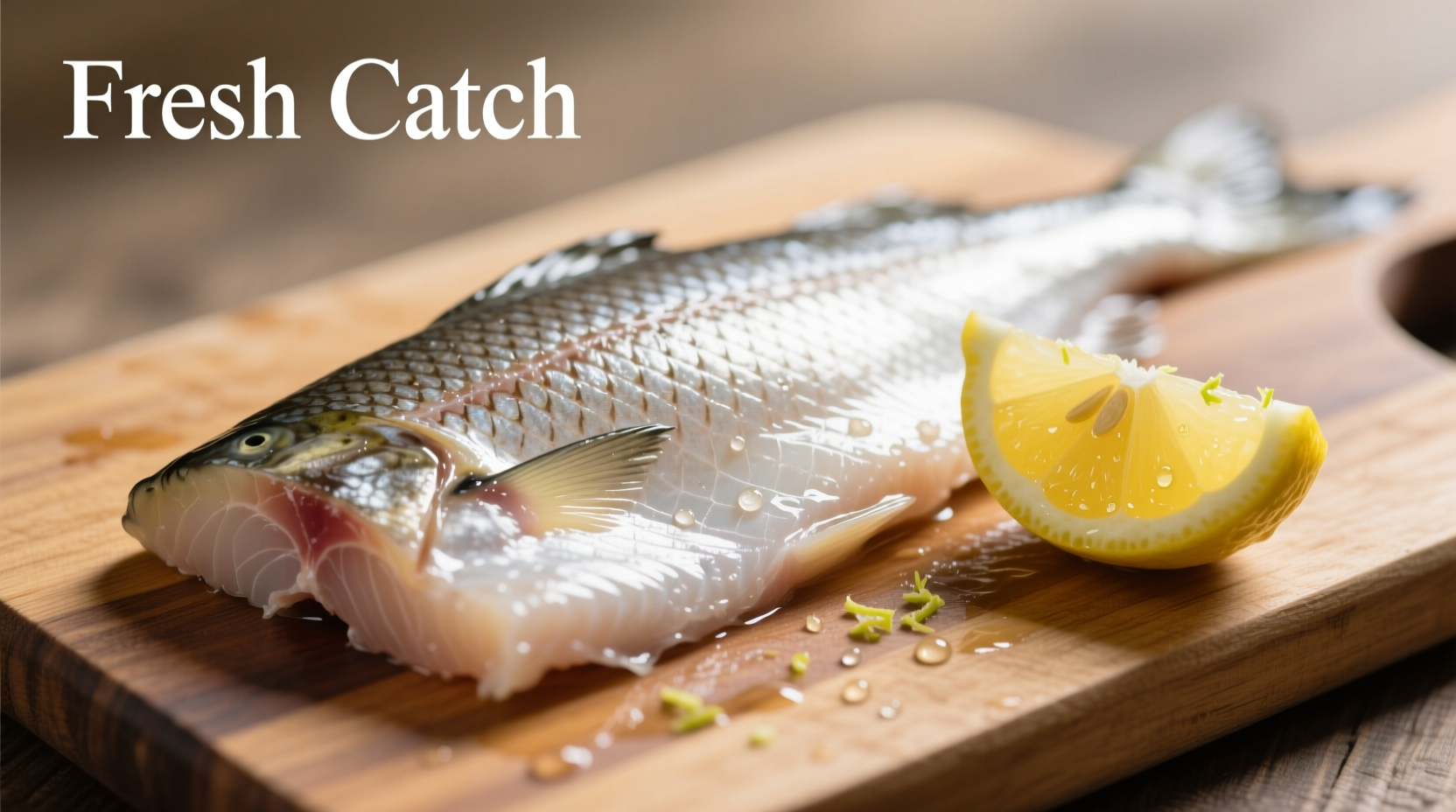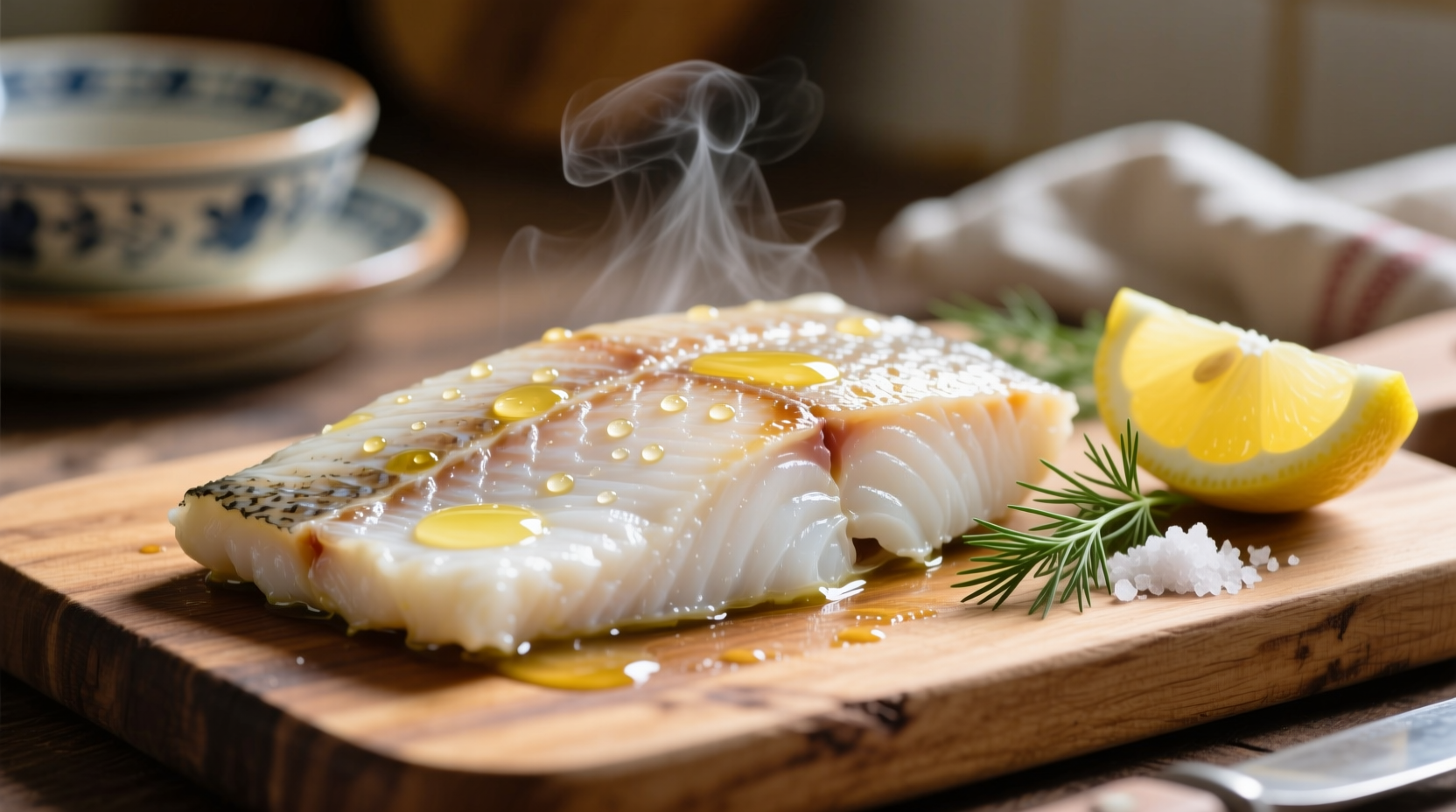Understanding Cod's Distinctive Flavor Profile
When properly prepared, Atlantic cod offers one of the most approachable seafood experiences available. This popular white fish earns its reputation as a culinary blank canvas thanks to several key characteristics:
- Mild intensity - Cod registers low on the fish flavor spectrum, making it ideal for those new to seafood
- Subtle sweetness - A delicate natural sugar content balances its clean ocean flavor
- Clean finish - Lacks the oily aftertaste found in fish like mackerel or salmon
- Minimal fishiness - When fresh, cod shouldn't have that strong 'fishy' taste many associate with seafood
The texture plays an equally important role in cod's appeal. Raw cod has firm, pearly white flesh that transforms into large, tender flakes when cooked. This flakiness—without becoming dry or crumbly—is what makes cod so prized by chefs and home cooks alike. The texture holds up well to various cooking techniques while readily absorbing complementary flavors.

Cod Compared to Other Popular White Fish
Understanding cod's taste requires context. How does it stack up against other commonly available white fish? This comparison helps set accurate expectations:
| Fish Type | Flavor Intensity | Texture | Best Cooking Methods |
|---|---|---|---|
| Cod | Mild (2/10) | Large, tender flakes | Baking, poaching, pan-searing |
| Haddock | Mild-medium (3/10) | Firmer, smaller flakes | Frying, baking, chowders |
| Halibut | Mild-medium (4/10) | Dense, meaty flakes | Grilling, roasting, pan-searing |
| Tilapia | Very mild (1/10) | Soft, delicate flakes | Pan-frying, baking, broiling |
| Pollock | Mild (2/10) | Softer, more delicate | Frying, baking, fish sticks |
This comparison shows cod occupies a sweet spot between extremely mild fish like tilapia and slightly stronger options like halibut. According to NOAA Fisheries, Atlantic cod's flavor profile remains remarkably consistent across different preparation methods, which explains its historical popularity in coastal communities worldwide.
Factors That Influence Cod's Taste Experience
Several variables affect what cod tastes like in your kitchen:
Wild vs. Farmed Cod
Wild-caught cod typically has a slightly cleaner, more complex flavor profile than farmed varieties. The National Oceanic and Atmospheric Administration notes that wild cod's diet of small fish and crustaceans contributes to subtle flavor variations based on fishing location. Farmed cod offers more consistent texture and mildness but may have less flavor complexity.
Freshness Matters Most
The single biggest factor determining cod's taste is freshness. Properly handled cod should smell like clean ocean water—not fishy or ammonia-like. The Food and Agriculture Organization of the United Nations emphasizes that cod's mild flavor makes it particularly vulnerable to off-flavors when not properly stored. Look for:
- Firm, springy flesh that returns to shape when pressed
- Pearly white color (not yellowing or dull)
- No strong odor beyond a clean, briny scent
Why Cod's Mild Flavor Makes It Culinary Versatile
Cod's gentle taste profile isn't a limitation—it's what makes this fish so valuable in the kitchen. Professional chefs at the Culinary Institute of America consistently rank cod among the most versatile white fish because:
- It readily absorbs marinades and seasonings without overpowering them
- Its neutral base works with diverse global flavor profiles from Mediterranean to Asian
- The firm texture holds together during cooking while still flaking beautifully
- It pairs equally well with bold flavors (like capers and lemon) or subtle enhancements (like herbs and olive oil)
When preparing cod, remember that less is often more. Overpowering seasonings can mask its delicate sweetness. A simple preparation of lemon, olive oil, and fresh herbs typically showcases cod's natural qualities best.
Common Misconceptions About Cod's Taste
Several myths persist about cod's flavor that deserve clarification:
"Cod tastes fishy"
This is almost always a freshness issue rather than inherent to the fish. Properly handled cod has minimal fishiness. If your cod tastes strongly fishy, it's likely past its prime. The University of California Cooperative Extension confirms that cod's low oil content (around 0.5-1%) naturally results in milder flavor compared to oilier fish.
"All white fish taste the same"
While cod shares the 'white fish' category with species like haddock and pollock, each has distinct flavor and texture characteristics. Cod's larger, more tender flakes and slightly sweeter profile set it apart from its relatives.
Practical Tips for Perfect Cod Every Time
Maximize cod's flavor potential with these professional techniques:
- Dry thoroughly - Pat fillets completely dry before cooking for better searing
- Season early - Salt cod 15-20 minutes before cooking to enhance texture and flavor
- Avoid overcooking - Cod is done when it reaches 140°F (60°C) and flakes easily with a fork
- Acid balance - A squeeze of lemon or vinegar right before serving brightens the mild flavor
- Temperature control - Cook at moderate heat to prevent the delicate flesh from breaking apart
For beginners, pan-searing cod with olive oil, garlic, and lemon offers the perfect introduction to this versatile fish. The cooking process should take no more than 8-10 minutes total, preserving that desirable flaky texture without drying out the delicate flesh.
Final Thoughts on Cod's Flavor Journey
What does cod taste like? In its best form, it offers a clean, subtly sweet seafood experience that serves as an ideal gateway to exploring more varieties of fish. Its reputation as a 'mild' fish shouldn't be mistaken for blandness—rather, it represents culinary versatility that has made cod a staple in kitchens from New England to Norway for centuries. When properly selected and prepared, cod delivers a satisfying seafood experience that appeals to both seafood enthusiasts and those just beginning their fish-eating journey.











 浙公网安备
33010002000092号
浙公网安备
33010002000092号 浙B2-20120091-4
浙B2-20120091-4